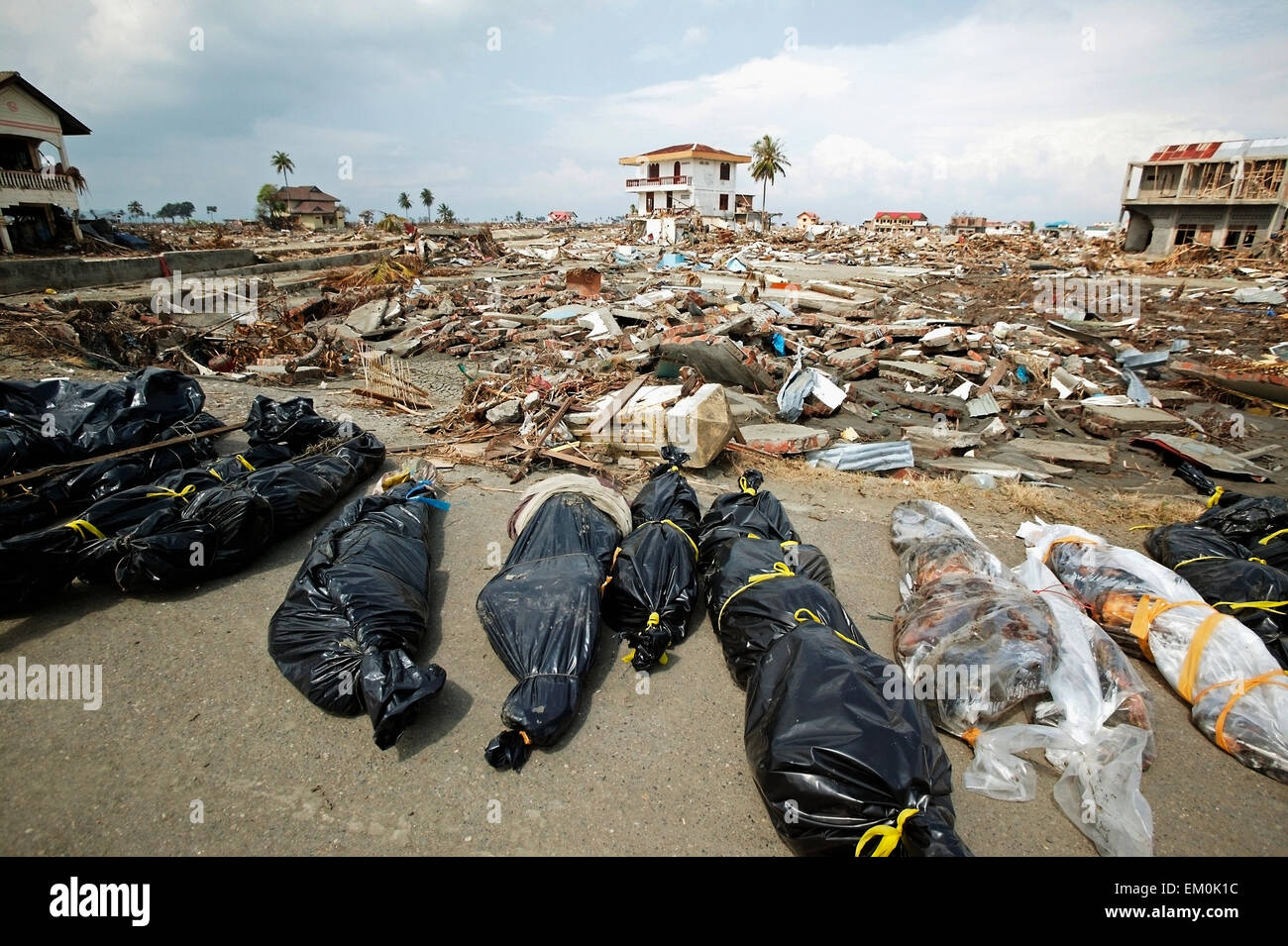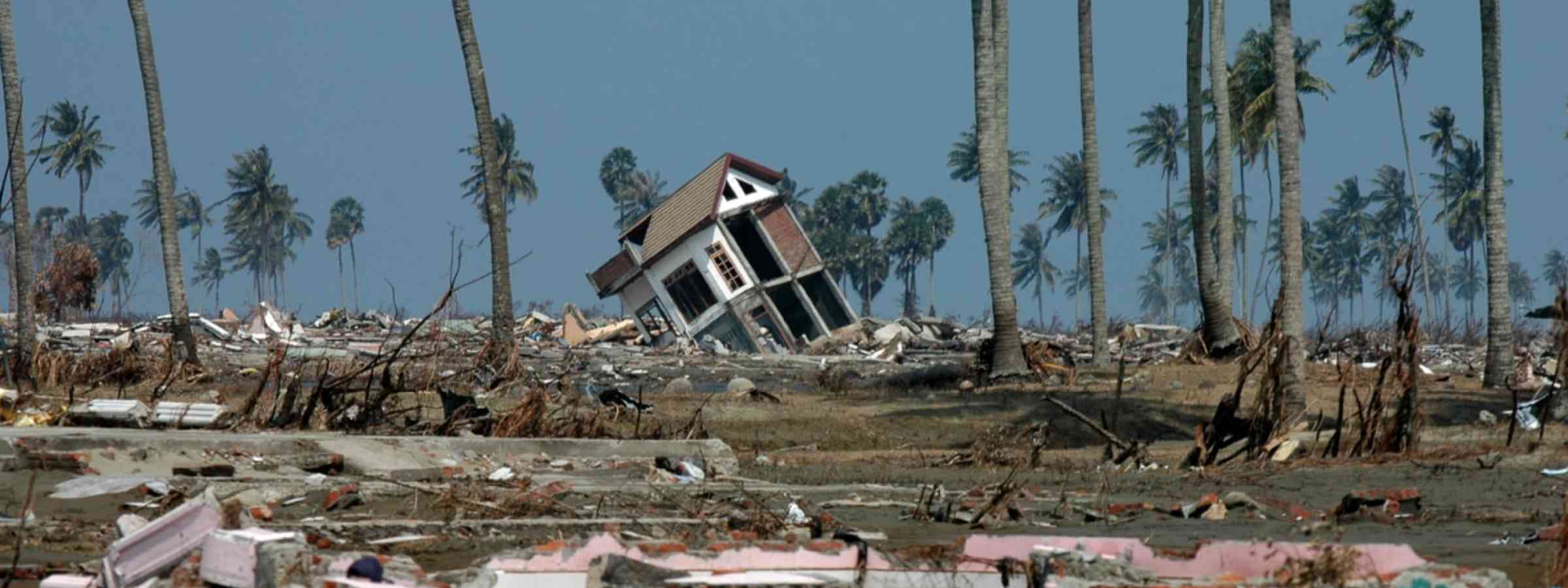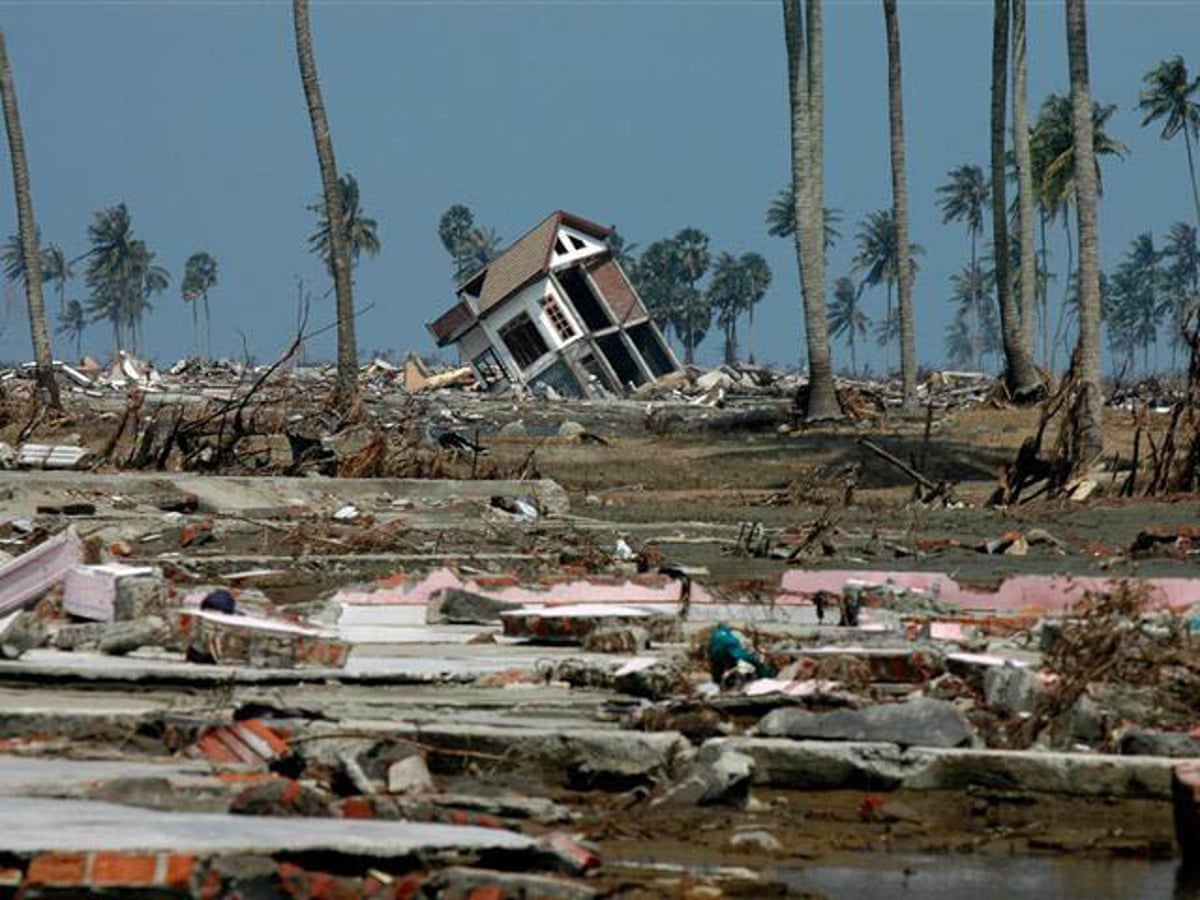On a quiet Sunday morning, just after Christmas in 2004, the world witnessed a truly immense natural event, one that sent ripples of shock and sorrow across many nations. This was an undersea earthquake, so powerful it rearranged the ocean floor, and its immediate consequence was a series of massive waves that crashed onto coastlines, bringing unimaginable devastation. It was a moment that, in a way, brought the planet to a standstill, making us all think about the raw power of our Earth.
The initial tremor, which struck off the coast of Sumatra, Indonesia, was, you know, a colossal release of energy, almost beyond what most people can easily grasp. Its effects were not confined to a single spot; instead, they spread out, touching shores in places as far off as Africa. Communities that had been vibrant and full of life just moments before were suddenly faced with an overwhelming force, changing everything for them in an instant. It was a day that really showed how connected we all are, even across vast stretches of water.
What followed was a period of immense challenge and, at the same time, a remarkable display of human kindness and determination. People everywhere, from local villagers to international aid groups, came together to help those whose lives had been turned upside down. The path to recovery was long and difficult, yet, there was a shared spirit of resilience that shone through, proving that even in the face of such a great loss, hope and the will to rebuild can indeed take hold.
Table of Contents
- The Tremendous Force of the 2004 Indian Earthquake
- How Did the 2004 Indian Earthquake Happen?
- What Were the Immediate Effects of the 2004 Indian Earthquake?
- The Tsunami's Reach - Beyond the 2004 Indian Earthquake Epicenter
- Why Was the 2004 Indian Earthquake So Devastating?
- Stories of Survival and the Aftermath of the 2004 Indian Earthquake
- How Did Communities Recover After the 2004 Indian Earthquake?
- Lessons Learned from the 2004 Indian Earthquake
The Tremendous Force of the 2004 Indian Earthquake
The event that unfolded on December 26, 2004, was, in some respects, truly extraordinary in its scale. It was an earthquake with a magnitude that scientists later measured as being around 9.1 to 9.3 on the moment magnitude scale, making it one of the largest ever recorded using modern equipment. This sort of measurement gives us a sense of the energy released, which was, quite frankly, more than all the energy consumed in the United States for a whole year. It happened deep beneath the Indian Ocean, where two massive pieces of the Earth's crust, known as tectonic plates, suddenly shifted against each other.
This sudden movement caused the seafloor to rise by many meters over a very long stretch, almost like a giant, unseen hand pushing up the ocean bed. This upward thrust of the ocean floor then displaced an enormous volume of water, setting off a chain reaction that resulted in towering waves. These waves, which we call tsunamis, then began to travel outwards, moving across the vast expanse of the ocean at speeds comparable to a jet plane. It was, you know, a force of nature that moved with incredible swiftness and a devastating reach.
The location of this powerful tremor was off the west coast of Sumatra, an island that is part of Indonesia. This particular spot is known for being a very active zone where these huge pieces of the Earth's surface meet and grind against each other. The energy that had been building up for a very long time in this area was, apparently, released all at once, leading to the massive jolt. The sheer size of the rupture, extending for well over a thousand kilometers, gives us a little bit of an idea of just how much movement took place under the sea.
- Erin Brockovich Film
- Lisa Hartman
- Joshua Blackledge
- Buhach Colony High School Principal
- Karen Mean Girls
How Did the 2004 Indian Earthquake Happen?
To grasp how this tremendous event came to be, we need to look at the Earth's outer shell, which is made up of several large, moving pieces, a bit like a jigsaw puzzle. These pieces, or plates, are always in motion, albeit very slowly, usually just a few centimeters a year. Where these plates meet, there can be a lot of friction, and sometimes, one plate slides beneath another in a process called subduction. The 2004 Indian Earthquake occurred along one of these subduction zones, specifically where the Indian Plate is slipping under the Burma Plate.
For a long time, the Indian Plate had been pushing against the Burma Plate, causing stress to build up. It's kind of like bending a strong stick; you can bend it so far, and then it just snaps. In this case, the "snap" was the sudden release of all that pent-up energy. The seafloor along a very long fault line suddenly ruptured, shifting upwards and sideways. This abrupt movement, honestly, was what created the initial jolt and, more importantly for the distant shores, set the stage for the enormous waves that would follow.
The energy from this sudden shift traveled through the Earth's crust as seismic waves, causing the ground to shake. But the real danger for coastal areas was the displacement of water. When such a large section of the ocean floor suddenly lifts, it acts like a giant paddle, pushing a huge amount of water upwards. This water then forms a series of waves that are very different from typical ocean waves; they are incredibly long, carrying a vast amount of energy, and can travel across entire oceans without losing much of their destructive power. So, that's basically how the 2004 Indian Earthquake began its devastating journey.
What Were the Immediate Effects of the 2004 Indian Earthquake?
The initial shaking from the 2004 Indian Earthquake was, for those closest to the epicenter, a terrifying experience. Buildings swayed and crumbled, and the ground itself seemed to dance. However, for most of the affected regions, the true horror arrived later, in the form of the tsunami. Within minutes to hours, depending on their distance from the source, coastal communities faced walls of water that swept away everything in their path. The immediate aftermath was, you know, a scene of utter chaos and destruction, with water covering areas that were once dry land.
The sheer volume of water, moving with such incredible force, simply erased entire towns and villages from the map. Homes, businesses, infrastructure like roads and bridges, all were torn apart and carried away. People who lived by the sea, those who relied on fishing or tourism, found their livelihoods gone in a flash. The impact on human life was, quite honestly, immense and immediate. Many people had very little time, or in some cases, no time at all, to react or seek safety as the waves came ashore.
Beyond the physical destruction, there was also an immediate and profound human toll. Thousands upon thousands of lives were lost in the first few hours, swept away by the powerful currents. Those who survived often found themselves injured, separated from their loved ones, and without any shelter or access to basic necessities. The sight of the receding waters revealing a landscape of debris and despair was, really, a stark reminder of nature's raw and unforgiving power, leaving a lasting mark on the memory of those who witnessed it.
The Tsunami's Reach - Beyond the 2004 Indian Earthquake Epicenter
What made the 2004 Indian Earthquake truly unique, in a tragic sense, was the incredible distance the resulting tsunami traveled and the number of countries it affected. While the earthquake itself happened near Indonesia, the waves radiated out across the entire Indian Ocean basin. This meant that places like Thailand, Sri Lanka, India, and even parts of Africa, thousands of kilometers away, were hit by these colossal waves. It was, basically, a truly global catastrophe, showing how interconnected our planet is.
The waves maintained their destructive energy over these vast distances because of their unique characteristics. Unlike regular waves, which are confined to the surface, tsunami waves involve the entire water column, from the seafloor to the surface. This allows them to carry a tremendous amount of energy and momentum. As they approached shallower coastal waters, their speed decreased, but their height increased dramatically, turning them into towering walls of water that crashed onto unprepared shores. This is why, you know, the warning time was so short for many places.
Countries like Sri Lanka and India, for instance, experienced very significant damage and loss of life along their coastlines. Fishing communities, which are typically located right by the water, were particularly vulnerable. The waves didn't just cause flooding; they brought with them a powerful surge that pulled everything back out to sea as they receded, including people and debris. The sheer scale of the affected coastline, stretching across multiple continents, was, truly, a stark illustration of the far-reaching consequences of the 2004 Indian Earthquake.
Why Was the 2004 Indian Earthquake So Devastating?
There were several reasons why the 2004 Indian Earthquake and the subsequent tsunami caused such widespread and profound devastation. One major factor was the sheer size of the earthquake itself. As mentioned, it was one of the strongest ever recorded, meaning an enormous amount of energy was released, which then translated into exceptionally powerful tsunami waves. This immense force was, honestly, the primary driver of the destruction, simply overwhelming anything in its path.
Another critical reason was the lack of an effective warning system in the Indian Ocean at the time. Unlike the Pacific Ocean, which had a well-established tsunami warning system, there was no such infrastructure in place to detect these waves and alert coastal populations in time. This meant that when the waves arrived, people had little to no notice, preventing them from seeking higher ground or taking protective measures. The element of surprise, you know, played a very significant role in the high number of casualties.
Furthermore, many of the affected areas were densely populated coastal regions, often with buildings not designed to withstand such powerful forces. Informal settlements and fishing villages, which are frequently built very close to the shoreline, were particularly vulnerable. The combination of a massive natural event, the absence of early warning, and the concentration of people and structures in low-lying coastal areas created, basically, a perfect storm for catastrophe, making the 2004 Indian Earthquake an exceptionally destructive event.
Stories of Survival and the Aftermath of the 2004 Indian Earthquake
Amidst the overwhelming tragedy of the 2004 Indian Earthquake, there were countless stories of remarkable survival, moments of quick thinking, and acts of profound bravery. Many people, instinctively or by sheer luck, managed to find refuge on higher ground or cling to debris. There were accounts of individuals helping strangers, pulling them from the raging waters, or guiding others to safety. These personal tales, you know, offer a glimpse into the human spirit's ability to endure even the most dire circumstances.
The immediate aftermath was a scene of immense human suffering and a desperate search for loved ones. Families were torn apart, and the scale of the missing was truly heartbreaking. Aid organizations and local communities quickly mobilized, despite the widespread destruction, to provide assistance. People worked tirelessly to search for survivors, offer medical help to the injured, and provide food and water to those who had lost everything. It was, in a way, a race against time to help those in immediate need.
The psychological impact on survivors was, obviously, very deep and long-lasting. Many carried the trauma of what they had witnessed, the loss of family members, and the destruction of their homes and communities. The recovery was not just about rebuilding structures; it was also about healing the emotional wounds. The resilience shown by those who faced such profound loss and yet found the strength to begin again was, honestly, a powerful testament to the human capacity for hope after the 2004 Indian Earthquake.
How Did Communities Recover After the 2004 Indian Earthquake?
The path to recovery following the 2004 Indian Earthquake was, admittedly, a very long and complicated one for the affected communities. It wasn't just about clearing debris; it was about rebuilding entire infrastructures, homes, and lives from the ground up. International aid poured in from around the globe, providing much-needed resources, expertise, and support. This global outpouring of assistance was, you know, a critical factor in the initial stages of getting people back on their feet.
Reconstruction efforts focused on providing temporary shelter, then building more permanent housing, often with improved designs to be more resilient to future events. Livelihoods, particularly fishing and tourism, which had been completely disrupted, needed to be re-established. This involved providing new boats, fishing gear, and support for small businesses to restart. The aim was, basically, not just to replace what was lost but to build back better, creating stronger and more sustainable communities.
Beyond the physical rebuilding, there was a significant focus on social and psychological recovery. Programs were put in place to help people cope with trauma, and community support networks played a vital role in helping individuals and families heal. The process of recovery was not uniform across all regions, but the collective effort, both local and international, really showed a profound commitment to helping those affected by the 2004 Indian Earthquake find their footing again.
Lessons Learned from the 2004 Indian Earthquake
One of the most significant outcomes of the 2004 Indian Earthquake was the urgent realization that a comprehensive tsunami warning system was absolutely necessary for the Indian Ocean. Before this event, such a system simply did not exist, leading to the tragic loss of life that might have been avoided with early alerts. In the years that followed, a robust Indian Ocean Tsunami Warning and Mitigation System (IOTWMS) was, thankfully, put into place. This system now monitors seismic activity and ocean levels, aiming to provide timely warnings to coastal nations.
Another key lesson was the importance of public education and preparedness. Even with a warning system, people need to know what to do when an alert is issued. This includes understanding the natural signs of a tsunami, such as a sudden recession of the ocean, and knowing evacuation routes to higher ground. Communities in vulnerable areas now often participate in drills and educational programs, which, you know, help to build a culture of readiness.
Furthermore, the disaster highlighted the need for better coastal planning and construction practices. Building codes in many affected areas have been reviewed and updated to make structures more resistant to the forces of tsunamis. There's also a greater awareness of the benefits of natural coastal defenses, like mangrove forests and coral reefs, which can help to dissipate the energy of incoming waves. The 2004 Indian Earthquake, in a very serious way, served as a stark reminder of the planet's power and the critical need for preparedness and adaptation in coastal regions worldwide.
This look back at the 2004 Indian Earthquake reminds us of the immense power of natural forces and the profound impact they can have on human lives and communities. We've explored how such a colossal event came to be, the immediate and far-reaching devastation it caused, and why its effects were so widespread. We also touched upon the incredibly moving stories of survival and the challenging yet determined journey of recovery. Most importantly, we considered the vital lessons learned, which have led to significant improvements in warning systems and preparedness, aiming to prevent similar tragedies in the future.


